June 12, 2013
In case you hadn't noticed or are new to this site, I'm blogging a book right now called “Beyond Training: Mastering Endurance, Health & Life“.
And writing a book is hard. Arduous. Demanding, Draining. At other times, it's exciting. Exhilarating. Energizing.
So I have a confession to make.
The last five sections of this book (the parts about the five missing essential elements of Strength, Power, Mobility and Speed, and Balance) were freaking hard for me to write. They set me back over a month behind “publishing schedule” just because I had a hard time wading through the data and the application, and getting really, really clear about how I wanted to giftwrap the goldmine of practical information.
So thanks for sticking with me through that. And if you haven't checked those sections out yet, scroll down to the bottom of this post to read them now or later.
Add to them to Feedly, print them, send them to your Kindle, whatever. There's lots of gems in there. As a matter of fact, I did not leave a single training stone unturned when it comes to the little, extra daily hacks that are going to make you a more unstoppable, strong, healthy, vital individual. Of course, when the complete book is done, it will also be published and include lots of cool extras, like training plans, bonus chapters, and a beautiful hard cover version. Woo-freaking-hoo.
———————————–
However, there's just one paradoxical problem: up to this point, all you've learned about have been that stuff training techniques. And if you recall, the title of this book is “Beyond Training: Mastering Endurance, Health & Life”.
So now it's time to truly move beyond training. Beyond strapping on the shoes and pounding the pavement, chalking up the hands and grabbing the bar, or cinching up the Speedo and diving into the water.
And I gotta admit, I freeaking love the fringy, edgy stuff we're about to get into.
How about you?
Are you ready to delve into the content that makes me all rabid and foaming-at-the-mouth to talk about?
Good. I certainly am.
We're going to begin the next section of the book with a focus on recovery, and here's what you're going to get as we wade through this section:
Part 3, Chapter 6: How The Under-Recovery Monster Is Completely Eating Up Your Training Time, in which you're learn what recovery is and why you should care, when training adaptations actually occur and the enchanting and amazing molecular and muscular mechanisms that happen to your body when you recover like a true recovery ninja…
Part 3, Chapter 7: 25 Ways To Know With Laser-Like Accuracy If Your Body Is Truly Recovered And Ready To Train, in which -you'll learn what overreaching and overtraining truly is and exactly how to identify it, avoid it, and bounce back from it as quickly as possible, including a focus on self quantification methods such as heart rate, heart rate variability, body mass fluctuations, pulse oximetry, urine pH, etc. along with biomarker testing for hormones, vitamins, minerals, etc…
Part 3, Chapter 8: 26 Ways To Recover From Workouts and Injuries with Lightning Speed, in which I'll highlight the importance of when training adaptations actually occur (during the rest and recovery period) and show how to recover with lightning speed, including every beginner-to-advanced methods such as cold laser, fasting, PEMF, compression, electrostim, grounding, earthing, massage, vibration, acupuncture, taping, transdermal magnesium, prolotherapy, cold-hot contrast, cold thermogenesis, ultrasound, low-level radiation, anti-inflammatory diet, Vitamin C, proteolytic enzymes, fish oil, iron, amino acids, herbs, glucosamine, deload weeks, etc.
Part 3, Chapter 9: The One Hidden Component That Keeps 99% Of Athletes From Truly Recovering, in which you'll learn beginner-to-advanced stress relief techniques, relaxation and meditation techniques for home, travel, work, pre-race, etc. – including delving into tai chi, yoga, meditation, adaptogens, breath techniques, and more…
Part 3, Chapter 10: How To Biohack Your Sleep For Better Recovery, in which you'll get my top sleep, insomnia and jet lag hacks, including napping, polyphasic sleep, artificial light mitigation, binaural beats, sleep enhancing tools and supplements, and everything you need to never have to worry about the most anabolic time of your entire life – when you're sleeping…
You ready for all that? I certainly am.
So come along for the ride, be sure to leave your questions, comments, feedback, proposed edits, etc. below the post, and let's jump right into the Monster of Under-Recovery…in which you'll learn the magic of what happens when you recover the right way, and the really bad things that happen when you don't.
——————————————
What Is The Under-Recovery Monster & Why You Should Care
If you're anything like me, your simple definition of recovery goes something like this:
Recovery is when I'm not sore anymore.
Or perhaps…
Recovery is when I can exercise again and feel pretty good when I'm doing it.
So boom – you roll out of bed, shake out the legs and they don't feel too bad. The shoulders don't feel tight and restricted. Your eyes aren't overly droopy. So off to the workout you go. You're recovered, right?
But neither of those statements above are definitions of recovery. They're just a statement of the way your body feels. Instead, recovery would be more appropriately defined like this:
Recovery is your ability to meet or exceed performance in a particular activity.
This is actually the definition of recovery that is used regularly in scientific papers devoted to recovery (7, 14, 16), and if you think about it, it makes sense. Let's say, for example, you did a really hard bicycling workout. For some period of time – specifically, until you're recovered – your ability to ride an all-out, personal best 40 kilometer bicycling time trial is going to be reduced.

So if you can somehow speed up your rate of recovery, and get your cells, muscles, joints and nervous system to bounce back from physical strain as quickly as possible, then you can train more, train harder, train happier or just feel better when you get out of bed in the morning. More importantly, every time your body bounces back in the right way, you establish a new “ceiling” of performance capabilities.
Oh yeah – one other thing: due to the upregulation of oxidative enzymes, fat-burning hormones and metabolic “bounceback” you're going to learn about, you also avoid the dreaded skinny-fat syndrome.
The opposite scenario is what I call “under-recovery”.
And under-recovery is a real monster.
When you under-recover (which is really the same thing as overtraining if you under-recover for long enough), you end up completly wasting your training time. You're just basically training for the sake of training, with no change in performance or improvement. So in the same way that “black hole” training results in stagnated performance, chronic under-recovering also results in you never getting faster, better, stronger or happier with your results, year after year. When you're under-recovered, you're just a rat on a wheel – moving around lots but not getting anywhere.
I found an article in The Journal Of Strength & Conditioning Research with some really good graphs that show you what I mean (4).
Figure 1 represents the training and recovery curve for your average gym-goer or recreational exerciser who pops into the gym or jogs around the block every now and again, trains at a fairly low level, and easily recovers within a few hours after their workout.
Figure 2 illustrates what happens in a more serious exerciser or “elite” athlete who is putting in higher volume, higher intensity or both (i.e. triathlete, marathoner, Crossfitter, etc.). As you can see in this case, recovery is barely complete between these workouts, and every day's entire 24 hour period is taken up by either A) working out or B) recovering. So there's no time left for any actual improvement, and the result is a constant and disappointing performance plateau.
And then we get to Figure 3, which is where shit really hits the fan. Rather than simply an annoying plateau between recovery and workouts, in this case the individual is consistently overtraining, and the recovery between workouts is obviously incomplete. Every new workout begins in a slightly less recovered state than the workout before it, and eventually a state of complete fatigue and burnout is reached.
Finally, in Figure 4, you can see what happens when you speed up recovery using the methods you'll learn in this book. With more rapid recovery, every subsequent workout establishes the performance capabilities at a slightly higher threshold, and over weeks, months and years, continuous improvement happens.
Of course, in any of the scenarios above, the absolutely key take-away is that faster recovery fixes performance plateaus and also fixes performance declines. So what's happening during that bounce back period that magically allows you to raise the ceiling on your training?
Let's find out.
——————————————
What Happens When You Recover The Right Way
Your Muscles
After you workout, your muscles look like a scarred battlefield, especially if it's an impact based workout or one that involves some deceleration, such as running or weight training. This is because every time you strain your muscles with exercise, there is trauma to the muscle fibers (7). You're basically injuring yourself. See, I told you endurance sports are a masochistic endeavor.
But the whole idea behind why this is good is based on a phenomonon called “hormesis”. Hormesis is a biological reaction whereby a beneficial effect (improved health, stress tolerance, muscle growth, longevity, etc.) results from exposure to low doses of an agent that could be otherwise toxic or lethal when given at higher doses (6). So sure, exercise could kill you if you do it enough, but in low, moderate or controlled doses, sane exercise exposure can give you hormetic benefits. Other examples of hormesis, which you'll learn about later in this book, include fasting, calorie restriction, cold temperature, heat shock, low level radiation and germs exposure. In other words: things that are bad in high amounts can be good in low amounts.
So muscle injury is a form of hormesis and is something that is good in controlled amounts.
Here's why: once a muscle fiber gets injured, muscle cell organelles respond with inflammation and activate special “satellite cells” (see illustration), which are located on the outside, but very near to your muscle fibers (18). A biological effort to repair or replace damaged muscle fibers begins with the satellite cells fusing to each other and fusing to the muscles fibers. This not only repairs the muscle, but can also lead to increases in muscle fiber cross-sectional area or even the create of new muscle protein strands, called myofibrils.
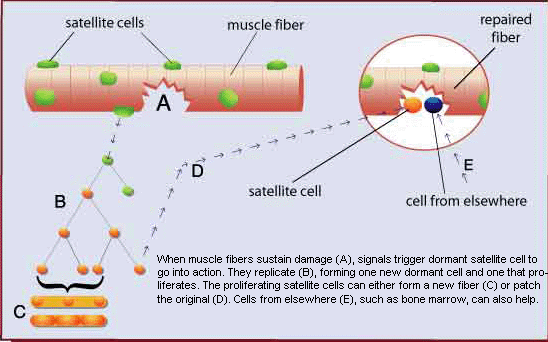 Some of these satellite cells even serve as a source of new nuclei so you can synthesize more proteins and create even more contractile myofilaments in your muscle, known as actin and myosin. Interestingly, there are higher numbers of satellite cells found associated in “endurance” slow-twitch muscle fibers compared to “power and strength” fast-twitch muscle fibers, since slow-twitch muscle fibers are constantly going through cell maintenance repair from daily activities such as standing, walking up stair, etc (12). So as an endurance athlete, you've won the satellite cell lottery, so to speak.
Some of these satellite cells even serve as a source of new nuclei so you can synthesize more proteins and create even more contractile myofilaments in your muscle, known as actin and myosin. Interestingly, there are higher numbers of satellite cells found associated in “endurance” slow-twitch muscle fibers compared to “power and strength” fast-twitch muscle fibers, since slow-twitch muscle fibers are constantly going through cell maintenance repair from daily activities such as standing, walking up stair, etc (12). So as an endurance athlete, you've won the satellite cell lottery, so to speak.
Unfortunately, especially for anyone restricting calories, eating a low fat diet, or simply training too much, most of these repair adaptations are severely hampered, since you probably happen to be low in growth hormone or Insulin Like Growth Factor, both of which stimulate satellite cells to produce the gains in the muscle fiber size. Insulin also stimulates muscle growth by enhancing protein synthesis and facilitating the entry of glucose into cells (18). Your satellite cells actually use glucose as a fuel to enable their cell growth activities. And, of course, glucose is also used for intramuscular energy needs (but as you'll learn in the nutrition chapter, this glucose could come from fats and proteins, and not necessarily a large plate of spaghetti or a bottle of sports drink).
Testosterone also affects muscle fiber repair. This is because testosterone can stimulate growth hormone responses in your pituitary gland, which then enhances cellular amino acid uptake and protein synthesis in muscle (10). In addition, testosterone can increase the presence of neurotransmitters at the fiber site, which can also help to activate tissue growth, and interact with nuclear receptors in your DNA, resulting in protein synthesis. So low hormone status, especially when it comes to growth hormone, testosterone and insulin means you're going to take way longer to recover.
But let's say you do you have your hormones optimized. How long should this muscle repair take? Researchers at McMaster University and the Washington University School of Medicine in St. Louis have looked into this, and they found that muscle protein synthesis increases by about 50 per cent for four hours after a workout (3). This is evidence that muscles are repairing damage accrued from the workout, and also building new material to make themselves stronger and more fatigue-resistant.
This repair process appears to peak about 24 hours after a workout, at which point muscle protein synthetic rate was up by a hefty 109 per cent in the McMaster-Washington research. By about 36 hours after a workout, the whole process is pretty much complete, and muscles are back to their normal status. So every time you beat up and tear down muscle fibers, especially with running and weight training, you're looking at an approximate 36 hour recovery time before another true high quality session is do-able or efficacious. And if you get greedy, hasty, impatient and jump in before that window happens, and you're beating up your muscles in an under-recovered state.
Of course, a bigger problem is that under-recovery is not only limited to your muscles. As you're about to learn, your blood, bone, nerves, immune system and hormones also need a chance to bounce back. But fortunately, the time period for recovery tends to be fairly similar for these systems too, assuming we're talking about a relatively sane 1-2 hour bout of training.
As you learned in the chapter on speed, your central nervous system includes your brain and spinal cord and connects to your muscles via another part of the nervous system called the peripheral nervous system. So when you need to contract a muscle, a message goes down your brain and spinal cord where it eventually connects to individual muscle motor units through something called a neuromuscular junction. The muscle receives that contractual message and fires.
But in the same way that muscles can fatigue, or become torn and injured, training can damage your nervous system too (1). This is called neural fatigue, and can drain both your central nervous system, or the local nerves at the muscle sites themselves (the neuromuscular junctions), that join your nervous system and the muscle together. The main reason for this is because your body releases inflammatory cytokines (chemical messengers) in response to muscle damage induced by your training. These inflammatory messengers dock on receptors in your central nervous system and thus hamper neural recovery. But unlike muscle damage, nerve fatigue doesn't just result from training, but can also be due to other nervous system stressors such as lack of sleep, drugs, stimulants, alcohol or lifestyle stress.
Since your nervous system is basically the “battery” that fires all your muscles, if your nervous system is under-recovered, then the strength and function of your muscles is negatively affected. So your muscles could be primed and ready to rumble, and if your nervous system is under-recovered, you're still screwed – and this is why you can still get overtrained or underrecovered even if you're not exercising excessively, but perhaps partying too much, working too much, or not sleeping enough.
And it's important to know that your central nervous system doesn't differentiate between muscle groups. If it's fatigued, it's fatigued. So if you do a hard run today, then head to the gym tomorrow, you may find that your strength on an overhead press is negatively effected – and unless your run on your hands and shoulders, that's not muscle fatigue – it's nervous system fatigue. When it comes to this issue, low-level, aerobic cardio don’t really create as much neural fatigue as high intensity cardio and sprints, which is why you can intelligently stack your week to alternate aerobic and anaerobic sessions if you want to allow for prime neural recovery (2).
So how long does that neural recovery actually take? In most cases, when your nervous system is drained from high intensity efforts or too much stress, it needs 48 hours to fully recover. Any intense training you do within that 48 hour window simply drains the nervous system even more. So this is why you can't simply do hardcore workouts day after day, even if they're performed for different muscle groups, or with different activities (i.e. high intensity bike one day, high intensity run the next day, high intensity swim the next day). Eventually, your nervous system will simply poop out.
Of course, you can also drain the local nerves that feed into specific muscles as well – which are those neuromuscular junctions I mentioned earlier. And when it comes to local neuromuscular fatigue, it can take up to 4 days before that links between your muscles and nervous system is fully recovered, which means that workouts which heavily stress the same muscle group may need as many as 4 days before having complete neural recovery.
This completely explains why you can have a crappy workout even if you're not sore – either your central nervous system or your neuromuscular junctions simply haven't recovered.
Angiogenesis is the process via which new blood vessels form from pre-existing vessels. Increased muscle contractions increase angiogenesis, and during the recovery period after a hard workout, you actually produce new blood vessels and capillaries that feed into the working tissue (9). Numerous studies have shown that the capillary density, expressed as the number of capillaries per muscle fiber, do indeed increase in response to training and recovery.
Researchers have also found increases in reticulocyte counts (new red blood cells) as a response during the tapering period from hard workout blocks, which suggests an increased erythropoiesis (red blood cell production) during recovery (15).
Another interesting adaptation that takes place in your blood is has been an increase in eosinophils, which are the white blood cell components that can detox some of the inflammation inducing substances in the body, and destroy allergen-antibody complexes, as well as an increase in lymphocytes, the white blood cells that fight infection (8). This is one reason why people who are under-recovered not only get sick more, but can also tend to be more susceptible to food allergies and food intolerances.
So if you're getting sick much or short of breath often, it's likely a blood under-recovery issue.
Your Bone
While overtraining or under-recovering can adversely affect connective tissue and actually decrease bone density, there is much evidence to suggest that chronic physical activity modifies connective tissue and allows for significant bone remodeling and increased bone density.
One of the best methods to maintain current bone mineral density is through physical activity (5). Activity increases the physical stresses on bone, and when the stressful stimulus is finally removed, these stresses help activate bone cells called osteoblasts, which favor bone deposition. Unfortunately, the opposite scenario is also true – repetitive stress without recovery results in bone breakdown and loss of bone density (17).
 Repetitive stress in the absence of recovery also depletes essental bone building minerals and vitamins. As long as you have adequate minerals on board, a low process sugar intake, and your blood calcium, magnesium and Vitamin K levels are adequate, your thyroid gland releases the hormone calcitonin, which inhibits the osteoclasts that break down bone and activates the osteoblasts which build bone. But in a high sugar consuming, hard charging athlete, the complete opposite scenario ensues.
Repetitive stress in the absence of recovery also depletes essental bone building minerals and vitamins. As long as you have adequate minerals on board, a low process sugar intake, and your blood calcium, magnesium and Vitamin K levels are adequate, your thyroid gland releases the hormone calcitonin, which inhibits the osteoclasts that break down bone and activates the osteoblasts which build bone. But in a high sugar consuming, hard charging athlete, the complete opposite scenario ensues.
Did I hear someone say “stress fracture”? Yep, that's the under-recovery monster talking.
Your Metabolism
We gotta love those crazy researchers at McMaster University, because that particular institution comes up over and over again when we're talking about exercise research. One study at McMaster divided well-conditioned runners who averaged about 50 miles of running per week into three groups (13). They then had these runners go into recovery mode for a bit. So this study was focused a bit more on tapering than on pure recovery, but still shows some of the cool metabolic supercompensation adaptations that take place when your body is given a chance to recovery.
During this recovery mode, one group just chilled for a week, doing no running at all. A second group jogged easily for a total of 18 miles over the course of a week. A third group got a bit more crazy: they ran six miles during the week, with almost all of the running consisting of all-out 500-metre intervals on the track.
So every group got pretty good recovery, but one group in particular combined their recovery with just a few intense training doses. After this week, the “nothing” group didn't improve at all, and the runners who logged 18 easy miles improved their performances by about 6%. And the runners who ran just six miles during the week had performances that increased by 22%! What happened metabolically that would have caused these changes?
Researchers found they had:
-more glycogen (storage carbohydrate) in their leg muscles
-higher aerobic, oxidative enzymes in their legs
-more red blood cell density
-higher blood plasma
The boost in aerobic, oxidative enzymes should come as no surprise. It is something you learned about in the chapter on the best ways to build endurance. I just want to emphasize that you don't get that enzymatic upregulation and the shift in higher amounts of fatty acid utilization unless you actually give your body a recovery period. So you can't turn your body into a metabolically efficient, fat burning-machine through training alone. There has to be a recovery period. That's why under-recovery can also make you skinny-fat.
The boost in carbohydrate storing capacity should also come as no surprise, since the runners were simply burning through less energy than they were using prior to beginning the easy weeks of the test. But once again – if you're constantly depleting your liver and muscle glycogen stores through training with inadequate recovery, you also never allow this energy storage supercompensation to take effect.
The higher red blood cell density and high blood plasma was at first a little confusing, since usually red blood cell concentrations increase when blood plasma decreases, and decrease as blood plasma increase – and the two don't usually both go up at the same time. But it turns out that during proper recovery, there is a special kidney effect in which the kidneys produce more erythropoetin, which spikes red blood cell density and at the same time, increases hormone production to help retain blood plasma (11). Interestingly, other studies have shown that blood plasma increases tend to be more associated with high-intensity interval training rather than easy aerobic work, and this is probably because high blood plasma allows for greater flow to the skin to promote cooling, as well as enhanced oxygen and nutrient delivery to working muscles to provide oxygen and energy.
In other words, if you're doing an exercise program that includes high-intensity interval training combined with smart recovery, your red blood cell density and blood plasma are both going to increase. Bonus double-whammy.
We could go on-and on. Other metabolic adaptations that take place when you keep yourself from under-recovery include:
-increased peak blood lactate concentration and decreased or unchanged blood lactate at submaximal intensities, meaning you “feel the burn less” when you jump back into training…
-reduced blood creatine kinase concentrations, indicating less full body inflammation and muscle damage – and of course, less soreness…
-increased testosterone, decreased cortisol, increased plasma and urinary catecholamines, lower levels of sex hormone binding globulin, higher growth hormone and insulin-like growth factor-1 – all indicators of better hormone status, better recover, and less propensity for skinny-fat syndrome…
–positive changes in single muscle fiber size and contractile properties along with markedly increased muscular strength and power, often associated with performance gains at the muscular and whole body level, which should come as no surprise…
-increased ATP and creatine phosphate stores to rely upon for high intensity efforts and as substrates which you can rely upon even in the absence of glucose and carbohydrate…
-higher myoglobin content, which allows for oxygen transport and extraction within skeletal muscle…
-favorable changes in immune cells, immunoglobulins and cytokines for enhanced overall immunological protection, meaning you get sick less…
-higher natural antioxidant levels, less oxidative stress, increased lipid peroxidation (ability to fight free radicals) and an overall upregular of genetic repair mechanims and enhancment of endogenous antioxidative systems – meaning that proper recovery is like eating vegetables, on steroids…
-lower tension, depression and anger, along with with significant improvements in total mood disturbance and mental fatigue, as well as increased motivation, arousal, and psychological relaxation…
Starting to get a pretty clear picture of why it completely sucks to go out and beat yourself up day after day, week after week and month after month?
It's because none of these positive adaptations are given a chance to fully set in. You're just strolling along hand-in-hand with the under-recovery monster.
—————————-
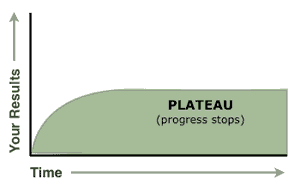 Summary
Summary
So when you're under-recovered, the under-recovery monster is completely stripping away your ability to positively adapt to your training, and instead forcing your body down into a sluggish quicksand of simply going through the same routine, day-after-day, with zero results.
And I don't know about you, but I want to feel and see results when I train. I really don't feel like wasting my valuable time stagnating on some running path or lifting the same weight every time I step into a freaking gym.
Sure, sometimes it's nice to just go out and get some fresh air regardless of whether you're body is “ready” for it, but for the majority of the effort, if you're not getting faster, stronger, better, better-looking or somehow improving your body or mind, you're leaving a lot on the table, and wasting much of your precious time.
 So are you ready to beat the under-recovery monster?
So are you ready to beat the under-recovery monster?
Good, because we're now going to jump into some serious recovery hacking that teaches you how to maximize your recovery and maximize the effects of training on your muscles, your nerves, your bone, your blood, your hormones and your metabolism.
As I've alluded to earlier, the final version of this book will also include full pre-written recovery plans and templates to help you wade through the process of piecing together all of the recovery hacks you'll learn, but in the meantime, let's learn how to get the under-recovery monster off our backs, shall we?
——————————————–
Waxing Poetic
But before we draw this chapter to a close, you need to know something important.
I began writing this chapter on a plane flight to a triathlon in Japan and finished it while sitting on the hard floor of a crowded bus ride back to the airport. And while sitting on planes, trains, buses and automobiles, I get a bit emotionally waxed from writing. So I wanted to tell you a little bit more about why I'm writing this book, as a bit of a pep talk to myself and to you. What's driving me to do write this stuff instead of watching the in-flight entertainment or playing eye-burning mega-sessions of Bejeweled and Angry Birds?
So here's why I'm writing this book.
Whether due to our innate pursuit of perfection, our constant quest to achieve the next milestone or our lofty aspirations to ascend our own personal Mount Everest, it is incredibly easy to develop a masochistic passion for endurance sports that keep drawing us into training session after session, WOD after WOD, race after race, month after month and year after year.
Really, that's part of the thrill of endurance competition – the chance to satisfy our thirst for battle, for conquest, for adventure and for the thrill of the chase. And no matter what guys like Jack Kruse or Dr. James O' Keefe or Robb Wolf or any of these mildly anti-endurance dudes will tell us, we're probably not going to stop seeking adventures, no matter how much damage it might do to our bodies.
But at some point, every endurance athlete has a “come to Jesus” moment, when we realize that the sport we love is actually capable of permanently harming our bodies or destroying our life. It may be a hormone panel, a hip X-ray, a knee MRI, a heart calcium plaque measurement or some other form of quantification that gives you this warning, or it may be your 5 year old kid asking you why they never see you on the weekends and why you're never there to give them a big hug in the morning (answer: because I'm getting my miles in on the bike, kiddo). When that moment happens, there are two choices – you either keep doing what you're doing until you completely explode in a stressful burst of inflammatory flame, or you move on the next chapter in your life and leave behind endurance sports.
Some very good endurance athletes, such as Mark Sisson, author of MarksDailyApple.com and a respected wealth of knowledge on health, fitness and nutrition, simply moved on to that next chapter, foregoing endurance sports altogether and taking up a more “evolutionary” form of fitness. Other countless athletes have continued to push on until simply forced to quit at the mercy of heart attacks, hip replacements, family break-ups or pure biological burnout.
But what if there was another choice – a third choice?
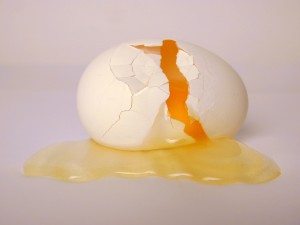 The choice to actually defy the status quo, commonly accepted, orthodox methods of endurance training?
The choice to actually defy the status quo, commonly accepted, orthodox methods of endurance training?
The choice to stop throwing ourselves like an egg at a wall until we finally crack?
The choice to train less, but achieve more?
The choice to combine health and performance while continuing to pursue the sport we love?
The existence of that third choice is my goal in writing this book – to teach you how to intelligently make that informed choice. To show you that you don't have to throw up your hands in despair at the newspaper headlines that tell you endurance sports are bad for your heart, the blog posts that tell you triathlons, marathons and serial Crossfit sessions destroy your body or the newspaper articles that tell you workouts will break up a marriage. To show you that if you do things the right way, you can keep doing the sport you love without destroying your body and life.
So I invite you to join me on this journey of discovery, and to find out what your body is truly capable of when you care for it properly while pursuing goals that the average person might consider to be insane and masochistic. Because you and I both share a secret – it's not the insanity or the masochism or the pain that draws us in.
It is the sense of adventure. The escape. The chance to be a superhero, even if just for a fleeting day. And that's what keeps us coming back, training session after session, race after race, month after month and year after year.
Let's just do it the right way, shall we? Are you ready to keep on discovering how?
Leave your thoughts, edits, questions, comments and feedback below, and in the next section we'll delve into How To Know With Laser-Like Accuracy If Your Body Is Truly Recovered And Ready To Train.
——————————————
Links To Previous Chapters of “Beyond Training: Mastering Endurance, Health & Life”
Part 1 – Introduction
-Preface: Are Endurance Sports Unhealthy?
-Chapter 2: A Tale Of Two Triathletes – Can Endurance Exercise Make You Age Faster?
Part 2 – Training
-Chapter 3: Everything You Need To Know About How Heart Rate Zones Work
–Chapter 3: The Two Best Ways To Build Endurance As Fast As Possible (Without Destroying Your Body) – Part 1
–Chapter 3: The Two Best Ways To Build Endurance As Fast As Possible (Without Destroying Your Body) – Part 2
–Chapter 4: Underground Training Tactics For Enhancing Endurance – Part 1
–Chapter 4: Underground Training Tactics For Enhancing Endurance – Part 2
–Chapter 5: The 5 Essential Elements of An Endurance Training Program That Most Athletes Neglect – Part 1: Strength
–Chapter 5: The 5 Essential Elements of An Endurance Training Program That Most Athletes Neglect – Part 2: Power & Speed
–Chapter 5: The 5 Essential Elements of An Endurance Training Program That Most Athletes Neglect – Part 3: Mobility
–Chapter 5: The 5 Essential Elements of An Endurance Training Program That Most Athletes Neglect – Part 4: Balance
Part 3 – Recovery
–Chapter 6: How The Under-Recovery Monster Is Completely Eating Up Your Precious Training Time
——————————————
References
1. Amann, M. (2013). Peripheral fatigue limits endurance exercise via a sensory feedback-mediated reduction in spinal motoneuronal output. Journal of Applied Physiology, May(30), [EPub]
2. Amann, M. (2011). Implications of group iii and iv muscle afferents for high-intensity endurance exercise performance in humans. Journal of Physiology, 1(589), 5299-309.
3. Areta, J. (2013). Timing and distribution of protein ingestion during prolonged recovery from resistance exercise alters myofibrillar protein synthesis. Journal of Physiology, 1(591), 2319-31.
4. Bishop, P. (2008). Recovery from training: A brief review. Journal of Strength and Conditioning Research, 22(3), 1015-25.
5. Braith, R. (1996). Resistance exercise training restores bone mineral density in heart transplant recipients. The Journal of American Applied Cardiology, 28(6), 1471–1477.
6. Fisher-Wellman, K. (2009). Acute exercise and oxidative stress: a 30 year history. Dynamic Medicine, 8(1)
7. Gandevia, SC. Neural control in human muscle fatigue: changes in muscle afferents, moto neurons, and moto cortical drive. Acta Phsyiol Scand 162: 275–283, 1998
8. Gleeson, M. (2007). Immune function in sport and exercise. Journal of Applied Physiology, 103(2), 693-699.
9. Gustafsson, T. (1998). Exercise-induced expression of angiogenesis-related transcription and growth factors in human skeletal muscle. American Journal of Physiology, 276(2), H679-H685.
10. Hackney, A. (2012). Testosterone responses to intensive interval versus steady-state endurance exercise. Journal of Endocrinological Investigation, 35(11), 947-50.
11. Hillman, R. (1957). Effect of exercise on blood plasma concentrations of vitamin a, carotene and tocopherols. The Journal of Nutrition, October(15), 605-613.
12. Macaluso, F. (2012). Satellite cell pool expansion is affected by skeletal muscle characteristics. Muscle and Nerve, November(13), [EPub]
13. MacDougall, D. et al., “Physiologic Effects of Tapering in Highly Trained Athletes,” Medicine and Science in Sports and Exercise, Vol. 22(2), Supplement, #801
14. McLester, JR, Jr, Bishop, P, Smith, J, Wyers, L, Dale, B, Kozusko, J, Richardson, M, Nevett, M, and Lomax, R. A Series of Studies–A Practical Protocol for Testing Muscular Endurance Recovery. J Strength Cond Res 17: 259–273, 2003
15. Mujika I, Goya A, Ruiz E, Grijalba A, Santisteban J, Padilla S. (2002). Physiological and performance responses to a 6-day taper in middle-distance runners: influence of training frequency. Int J Sports Med 23: 367-373.
16. Sayers, SP and Clarkson, PM. Force recovery after eccentric exercise in males and females. Eur J Appl Physiol 84: 122–126, 2001
17. Voss, L. (1998). Exercise-induced loss of bone density in athletes. Journal of the American Academy of Orthopaedic Surgeons, 6(6), 349-357.
18. Zanou, N. (2013). Skeletal muscle hypertrophy and regeneration: interplay between the myogenic regulatory factors (mrfs) and insulin-like growth factors (igfs) pathways. Cell and Molecular Life Sciences, April(4), [EPub]




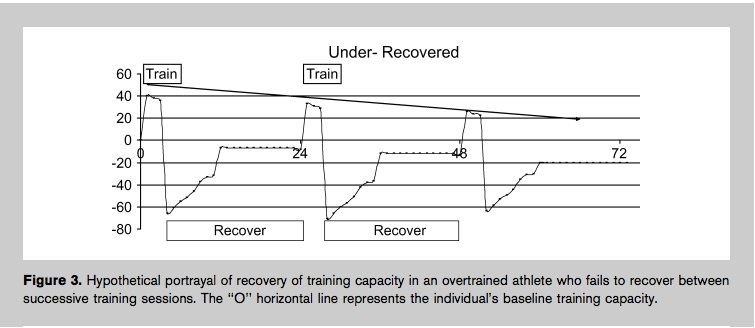
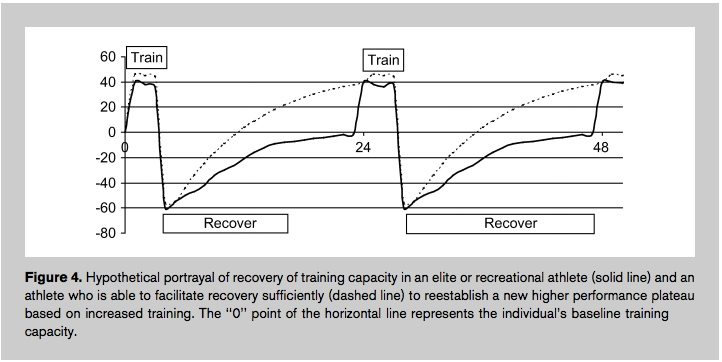
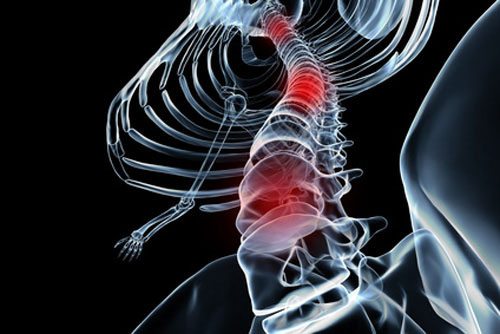
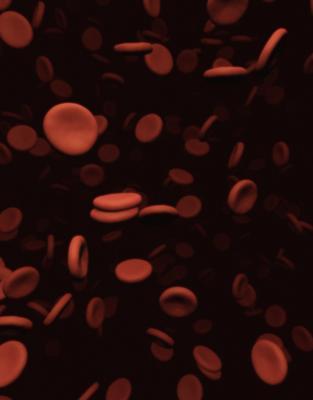
Thank you so much for those closing words. I can't tell you how much I needed to hear that from someone. Recently got some bad blood work back and am determined to find a way to do what I love while maintaining my health and well being. Thank you Ben.
Awesome Kas, I'm here to help if you need me!
I thought I was overtraining (I do ironman) turns out I have Lyme disease
Have had it for year and a half my doctor missed it even though I went in over and over with classic symptoms
Great chapter Ben, I just love the science behind it all. Being a Master's athlete who wants to continue to compete,but not destroy an already well used body-this chapter gives glimpses of what maybe possible with limited training time. Thanks
So how to recovery properly will be in the book? When does it come out? I alway look at my morning HR and if it is elevated by 10 beats more than normal I take it easy. Sadly I dont have heart rate variability. Your book is looking good though.
Nick, yes, EVERYTHING will be in book, released this winter! HRV is easy to get. Just follow the links in the chapter!
Just a couple of tiny typos I picked up Ben otherwise brilliant thankyou
gland instead of bland
Testosterone also affects muscle fiber repair. This is because testosterone can stimulate growth hormone responses in your pituitary bland, which then enhances cellular amino acid uptake [if you're using "Google suggestions" it actually picked this up when I copied and pasted it]
The other you said work work…though this may be right
But it turns out that during proper recovery, there is a special kidney effect in which the kidneys produce more erythropoetin, which spikes red blood cell density and at the same time, increases hormone production to help retain blood plasma. Interestingly, other studies have shown that blood plasma increases tend to be more associated with high-intensity interval training rather than easy aerobic work work, and this is probably because high blood plasma allows for greater flow to the skin to promote cooling, as well as enhanced oxygen and nutrient delivery to working muscles to provide oxygen and energy. [Ha and Google just gave me a different spelling of erythropoetin to erythropoietin ]
No reply required Ben your brilliance is enough thanks again
I'm genuinely curious how you're going to show us that third option you mention at the bottom of the post. Truly not trying to be snarky at all, but it would appear that your blood test results did more to prove rather than refute what the anti-endurance crowd is saying. My hope is that you can demonstrate that a third choice is available and then teach us how you did it. It would appear that you have a tough row to how (as my Grandpa would say), but if anyone can do it, we believe in you. Looking forward to watching the journey!
Jared, I would HIGHLY recommend you join the Inner Circle to hear some of the detailed truths and thoughts behind those blood results. Also, those results were a big part of my personal "Come To Jesus" moment that I'm referring too…
Great Chapter, it will be a great book!
A couple of editorial comments:
spelling: "Testosterone also affects muscle fiber repair……pituitary gland
Confusing to me: "since the runners were simply burning through less energy" ?? which runners? less energy than what?
Thanks for the edits, Steve. I'll get on that.
Thanks Ben – this is my favorite yet. Just finished writing a "guide" to recovery for my triathlon team – significantly based on what I have learned from you. Looking forward to the rest of the recovery chapters. I do have to say that this chapter's Bone (maybe also connective tissue) and Blood sections were a little lacking in the details and citations. Also, any interest in writing about mental recovery? The mental burnout and lack of motivation can go hand-in-hand with the under-recovery monster. Aka, when can we tell that our mental fatigue is a result of under-recovery as opposed to other stuff (the rest of life, changing interests, distance of goals…etc).
Thanks a bunch!
Sam, I'm going to be adding more citations to bone and blood section, but in meantime, do you want to help me? Can you add me what you would like to see in those sections, or perhaps write a bit for me that I can tweak and add? If so, email me [email protected]. Also, I'm definitely going to want to add some stuff on mental recovery too, but that will mostly come in stress chapter.
I am currently battling the 'monster' and need that constant reminder that I can't 'workout' my way out of this! Thank you for your post!
Great chapter! I’d love to get a few lines added about how age affects the factors mentioned in the text, ie how one’s ability to recover diminishes with increasing age. Most of these studies are done on young subjects.
Ben….you are the best…really…I love your comment re Robb Wolf who I also really like too but but get tired of the no endurance commentary…you have changed my life…and brought me to a new level in my cycling…and that is pretty darn sweet for a 57 yr old babe to say…keep up the good work…and not drinking the" koolaid!"
Barbara
My favorite chapter yet and the one that I needed to read more than anything. THANK YOU Ben! And love the new look of the website and well, the app – ROCKS.
Hey Ben Great chapter! Cant wait to have the whole book in one piece ;)
I do think that over training, especially in triathletes, is not only performance related. ie, It's not
only that they think they will lose speed, ability strength etc…
The psychology behind over training is NB
For example: Weight gain and the possibility of weight gain is an issue for a lot(perhaps most endurance athletes). Subconscious fear has a lot to do with it and compromising ones body seems to be blocked out of peoples minds.
Ben…how would you classify the difference in the 36 hour recovery period that your research has led you to compared to the much longer recovery period of someone like Doug McGruff and Drew Baye from the "Arthur Jones" lineage? Thanks!
I've personally followed McGuff's protocol to the T before and found myself needing 4-5 days. Never the full week they recommend. But during my bodybuilding days, there were some workouts (i.e. a 2 hour chest workout) that would need up to 10 days recovery! Typically, the higher the intensity combined with the higher the volume, the greater the recovery implications. Also, not sure how much McGuff has experimented with the type of recovery "hacks" we're going to be getting into…
Ben,
Brilliant!! Can't wait for the next chapter…and the book.
I was especially moved by the last bit…the 3rd choice.
All the best!
Outstanding, OUTSTANDING post Ben! Can't wait for the full book, but this break down on the ENTIRE scope of recovery is the best I have seen! Well done sir! Lots of food for thought here!
Me likey. On the same page, brother.